The current story is about my last Ruger “Six-”model double action revolver. I’ve had a checkered history with them, beginning with my first – a stainless four-inch Security Six. Purchased in 1976 in anticipation of my first police job, it was pretty horrible. The DA-pull was nothing about which to write home, the skinny barrel gave the impression of wavering all over the target – and all the “cool kids” had S&Ws or carried auto-loaders.
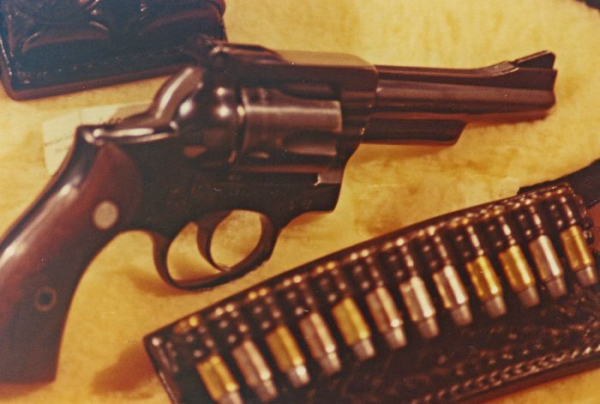
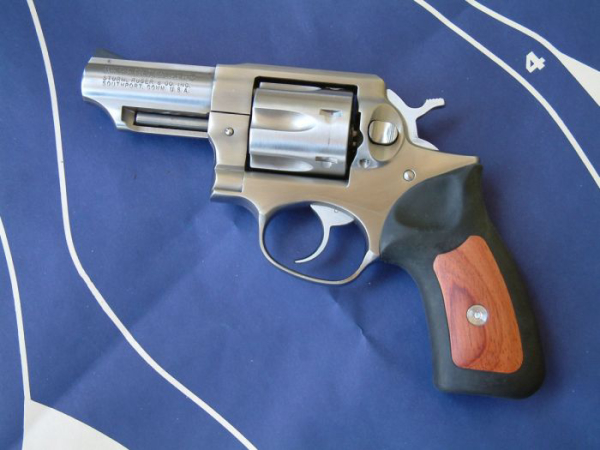
I don’t recall, but believe the piece was in the second frame rendition of the “Six” series of revolvers. As soon as I got my Colt National Match (from the 1960s), the Ruger went down the road. During my first full year, a coworker showed up with a six-inch Security Six. He’d detail stripped it, polished the grooves off the face of the trigger, and carefully polished the mating surfaces of the action – including the mainspring strut. It had a rather nice double action pull and I found myself with that gun.
I even wore it on the job. It was durable, strong and quite accurate. A similar action job was done to a four-inch blue Security Six and it got fitted with a spurless “Speed Six” hammer. It likewise had a decent DA pull. The last Ruger “Six” I had from that era was the “Skeeter Skelton -Border Patrol” style. It had a full-diameter four-inch barrel, smooth faced trigger and white outline rear sight. Again, I had a spurless “Speed-Six” hammer that I installed, along with a spring kit and flat-faced adjustable rear sight from Gil Hebard Guns in Illinois. I added Hogue Monogrips and put it in a Bianchi “Judge” front break holster.
I finished out my first police job with it, took a couple of temporary small-town cop jobs and used it, ending up in an airport safety department wearing that gun. By the time I made it to the Sheriff’s Department, that gun too had taken its leave.

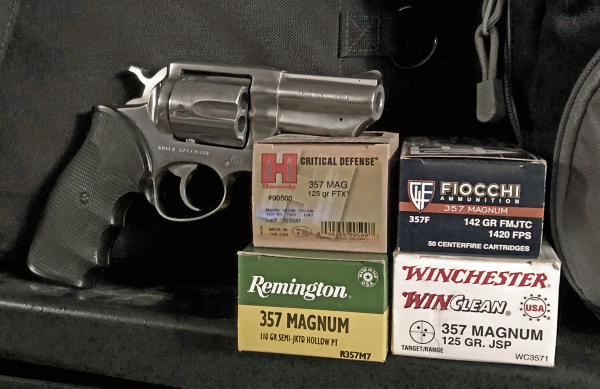
Some years later, while working the range, a reserve deputy brought a boxed Ruger Speed Six, the one you see here. I don’t even know if it’d ever been fired. I’d never had one and he wanted to divest himself of it, so a deal was struck.
A solid, 30-ounce, six-shot snub, it had the Ruger 2 ¾” barrel. The serial number range is from 1984. The trigger, from that era, was smooth-faced to promote double-action firing. The action is slick, but appears that no one messed with it. A set of Pachmayr “Grippers” graces the old heater. I found it in a safe in “old stock” and thought I should actually fire it.
Unlike the Security-Six, the Speed-Six has fixed sights – something it shares with the firm’s Service-Six. The Service-Six has the square butt frame of the Security-Six. The Speed Six has a round butt. They made a snub Security-Six, a square butt with adjustable sights.
The current specimen is chambered for 357 Magnum; most of the “Six” series was likewise chambered, with some versions made in 38 Special and a few in 9x19mm. This series of revolvers – Security-, Service- and Speed-Six, all produced between 1971 and 1988 – accounted for 1.5 million guns produced by Ruger.
It was a success.
The Speed-Six variant of the Security-Six has fixed sights, a somewhat more rounded butt grip frame and was intended for use by plainclothes personnel rather than for uniformed duty. It weighs in at around 30 ounces empty. The current sample was with its box listing its pedigree (GS-32 Ruger Speed-Six 2.75” stainless 357 Magnum revolver).
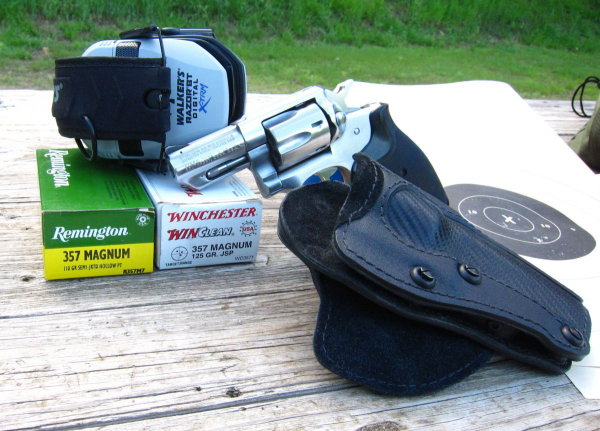
I took it to the range with a Safariland “Custom-Fit” adjustable paddle holster, what was left of a box of Winchester “Winclean” 125gr JSP range ammo and a legacy target, a B-21 analog, envisioned first, I believe, by FitzGerald.
To say that it’s a cannon with that ‘range’ ammo could qualify as understatement. While the gun didn’t inflict injury on my end – except to aggravate the nerve damaged hand – it produced a wonderful fireball and more than enough blast. To shoot this on a line with other shooters can be cause for being evicted from the range.
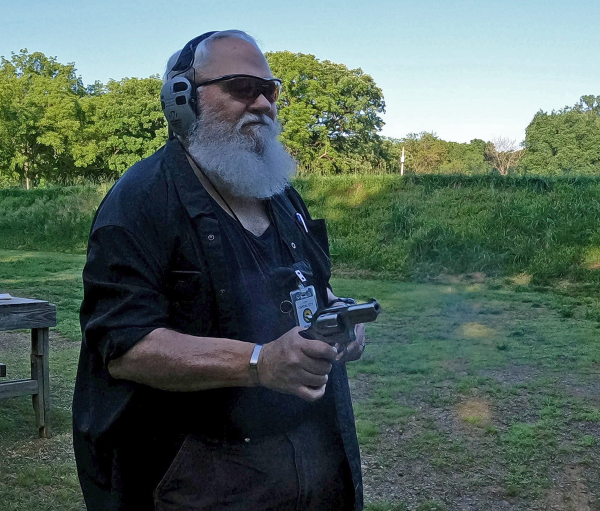

Out of 165 points possible, I scored a 160 – yep, a miss to embarrass myself. At twenty-five yards, I shot a pair from the holster, followed by two pairs from low ready. I pursued a number of other drills, including five-yard presentations to the “high value” scoring area producing a line hit on the right side in addition to the cluster of nicely centered hits. I also did some Fairbairn style ‘close-hip’ up close – because it’s an old-ish gun fired on a traditional target of the revolver era.
The Pachmayr “Grippers” cover the backstrap, making the reach just a bit long, but the cushion over the backstrap – not brittle even in these old stocks – was welcome. I lost view of the (faded) black front sight. After shooting, I noticed shaking in my hand while making notes. This wasn’t terribly unusual “back in the day” either.
It’s a remarkable old gun, now replaced by a 3” GP100 and a 2.5” GP100 7-shot. While I miss the days of old – and it’s fun to revisit – I won’t live there. While the shooter wasn’t up to it, the gun certainly is. If you can find one in decent shape, you won’t be sorry to pick it up.
-- Rich Grassi